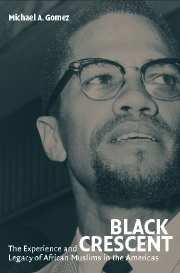Book contents
Prologue
Published online by Cambridge University Press: 05 June 2012
Summary
In 1492, Christopher Columbus crossed the Atlantic, and with him came Islam. Among his crews were Muslims who had been forced to profess the Christian faith; it is highly probable that Islam remained embedded in the soul. To these and others similarly stationed throughout the western hemisphere in the fifteenth and sixteenth centuries were added enslaved Africans, some of whom were also Muslim. Through the nineteenth century, the number of African Muslims transported to the Americas continued to grow. What follows is a history of these Muslims and their descendants in the Americas, the latter a category comprised of the genealogically related as well as the African-descended who would convert to Islam.
The work is divided into two sections. The first discusses the presence of African Muslims in the Americas through periods of enslavement, and provides the context for the second part's examination of Islam's development in the United States, where through a progression of ideas communities transitioned from variation to orthodoxy and the adoption of the faith's five pillars – the formulaic profession of God's Oneness and Muhammad as His messenger, daily prayer, almsgiving, pilgrimage, and fasting Ramadan – as well as the embrace of the seventh-century Qur'ān and acceptance of Muhammad as seal of the prophets. The principal argument here is that subsequent orthodoxy owes much to earlier variegation.
- Type
- Chapter
- Information
- Black CrescentThe Experience and Legacy of African Muslims in the Americas, pp. ix - xPublisher: Cambridge University PressPrint publication year: 2005



